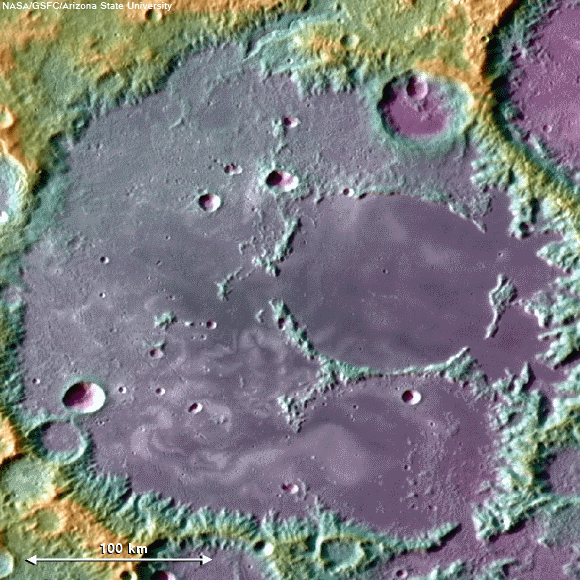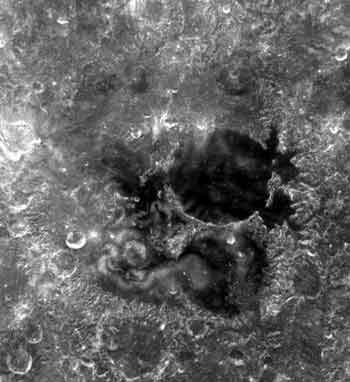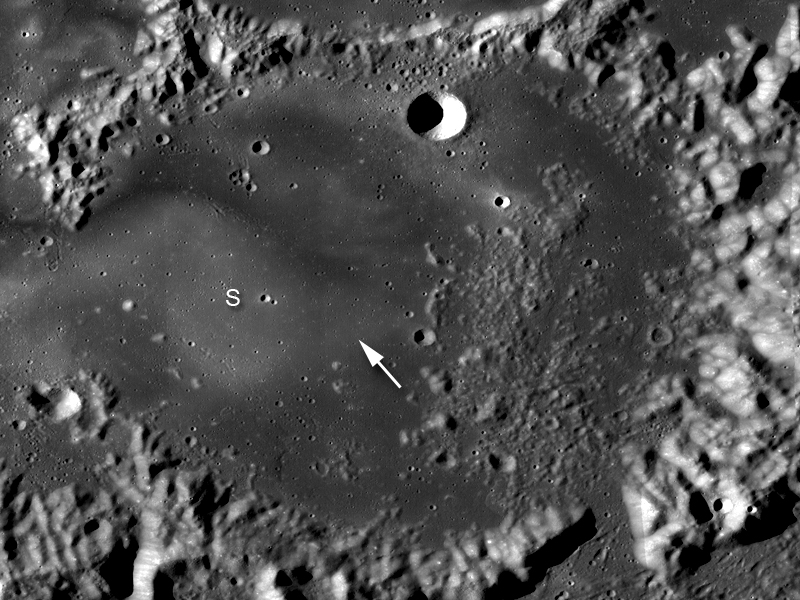
 |
|
Moon ~ Mare
Ingenii Magnetic Anomaly Farside
Mare
Marinus - Clementine
Spacecraftt - Courtesy of US
NAVY/USGS
Click image for full resolution |
Mare
Ingenii Topographical Map Credit: NASA/Goddard/Arizona State University |
| Mare
Ingenii ~ Farside Magnetic Anomaly PAPERS, ETC
NOTE: Bring Data from Living Moon Pages |
 |
| The Depths of Mare
Ingenii 06.17.10 Mare Ingenii may be best known for its prominent lunar swirls, which are high albedo surface features associated with magnetic anomalies. However, lunar swirls are not the only unique geologic feature found in the farside "sea of cleverness."  Impact
craters are visible everywhere on the moon, but
pits are rare. This pit in Mare Ingenii, the
"sea of cleverness," is about 130 meters (427
feet) in diameter! Image width is 550 meters
(1,805 feet), illumination is from the upper
right, LROC Frame: NAC M128202846LE. Credit:
NASA/Goddard/Arizona State University
The high-resolution cameras aboard the Japanese SELENE/Kaguya spacecraft first discovered this irregularly-shaped hole, visible in the above image at LROC's 0.55 m/pixel resolution. The boulders and debris resting on the floor of the pit are partially illuminated (left side of the pit, above image) and probably originated at the surface, falling through the pit opening during collapse.  Arrow
indicates location of pit. "S" indicates one of
the numerous lunar swirls located in this
region. Image is a portion of LROC WAC mosaic,
200 meters per pixel resolution; image width is
160 km (100 miles). Credit: NASA/Goddard/Arizona
State University
A pit in the Marius Hills
region, previously discovered by the JAXA
SELENE/Kaguya mission, is thought to be a skylight
into a lava tube in the rille-riddled region.
Similar to the Marius Hills pit, the pit in Mare
Ingenii is probably the result of a partially
collapsed lava tube. However, the numerous volcanic
features of the Marius Hills (such as the prominent
rilles and domes) are not found in Mare Ingenii.
Credit: NASA/Goddard/Arizona State University The Depths of Mare Ingenii - NASA |
|
All material on these pages, unless otherwise noted, is © Pegasus Research Consortium 2001-2019 |
 Webpages © 2001-2019 Pegasus Research Consortium |